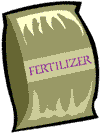
Water
Quality Assessment: Chemical: Ortho- and Total Phosphate
 Phosphorus
is a nutrient essential for the metabolic reactions of plants and animals.
Once it enters the ground water or a stream, it quickly bonds to soil
particles, making it temporarily unavailable to living organisms. Since
it naturally occurs in low levels, phosphorus is often the "growth-limiting"
factor for plants.
Phosphorus
is a nutrient essential for the metabolic reactions of plants and animals.
Once it enters the ground water or a stream, it quickly bonds to soil
particles, making it temporarily unavailable to living organisms. Since
it naturally occurs in low levels, phosphorus is often the "growth-limiting"
factor for plants.
Phosphorus occurs in several forms—both inorganic and organic. Inorganic orthophosphate (PO43-) is the only form available to living organisms. However, the other forms of phosphate can be transformed into orthophosphate. For this reason, total phosphate is generally measured in addition to orthophosphate. The measure of total phosphate provides an estimate of the amount of phosphorus potentially available to plants and animals.
Since the phosphorus requirements of algae are minimal, rapid algal growth occurs when excess phosphorus is present in streams. Common sources of excess phosphorus include agricultural runoff from feed lots and fertilized fields, and sewage that contains organic phosphorus as well as inorganic phosphorus in products such as detergents. The resulting algal bloom can lead to eutrophication and the subsequent degradation of stream water quality.
Overview ..|.. Biological Assessment.. |.. Chemical Assessment.. |.. Physical Assessment.
pH
/ Alkalinity / Hardness
/ Nitrates. Nitrites, and Ammonia / Ortho-
and Total Phosphate / Dissolved Oxygen and Biochemical
Oxygen Demand / Fecal Coliform / Conductivity
and Density
Glossary .|.
Related Links
.|..
References
..|..
PBL Model
.|
Home ..|.. Teacher Pages ..|.. Modules & Activities
HTML code by Chris Kreger
Maintained by ETE Team
Last updated November 10, 2004
Some images © 2004 www.clipart.com
Privacy Statement and Copyright © 1997-2004 by Wheeling Jesuit University/NASA-supported Classroom of the Future. All rights reserved.
Center for Educational Technologies, Circuit Board/Apple graphic logo, and COTF Classroom of the Future logo are registered trademarks of Wheeling Jesuit University.
